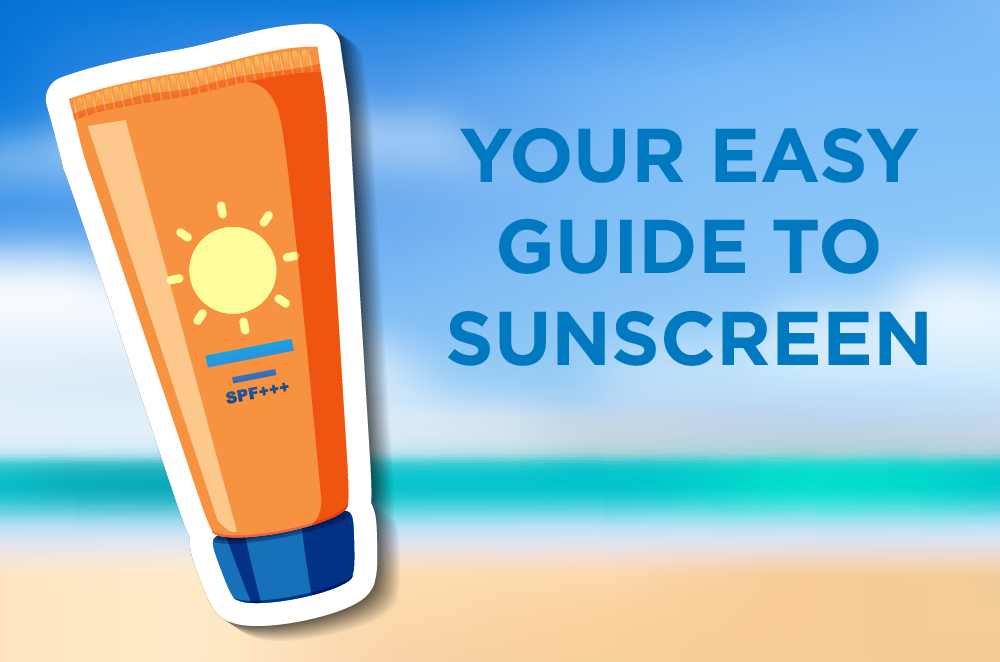We believe in keeping our community healthy and happy, and that includes enjoying the beautiful Oklahoma sunshine safely! We know navigating the world of sunscreens can sometimes feel like trying to solve a complex puzzle. What does SPF really mean? And “broad-spectrum”—is that just a fancy marketing term? Consider this your easy guide to sunscreen as we break it down so you can make confident choices for your skin.
Sun Protection Factor (SPF)
First things first, let’s talk about SPF, or Sun Protection Factor. Think of SPF as your sunscreen’s power rating against sunburn. More specifically, it tells you how well it protects your skin from UVB rays. These are the primary culprits behind those painful sunburns and, importantly, are a major factor in skin cancer.
Here’s the simple breakdown of what those numbers actually mean:
- SPF 15 blocks about 93% of UVB rays.
- SPF 30 blocks about 97% of UVB rays.
- SPF 50 blocks about 98% of UVB rays.
You might notice that the protection doesn’t double when the SPF number does. Therefore, while higher SPF offers a bit more protection, the increase is incremental. That’s why most dermatologists, including the American Academy of Dermatology, recommend an SPF of 30 or higher. It gives you excellent protection without giving you a false sense of invincibility.
Broad-Spectrum Protection
While SPF primarily focuses on UVB rays, it’s crucial to understand that the sun actually emits two types of harmful UV radiation that reach us:
UVB (Burning): These rays cause sunburn.
UVA (Aging): By contrast, these rays penetrate deeper into your skin. They are responsible for premature aging signs like wrinkles, fine lines, and sunspots. What’s more, UVA rays also contribute to skin cancer. And here’s a crucial point: UVA rays are present all year round, even on cloudy days, and can even pass through windows!
This is precisely where “broad-spectrum” comes in. A broad-spectrum sunscreen is your all-in-one defender, protecting you from both UVA and UVB rays. The U.S. Food and Drug Administration (FDA) has specific testing requirements for sunscreens to earn this label, thereby ensuring they provide balanced protection. Always look for “broad-spectrum” on the label—it’s non-negotiable for comprehensive sun safety.
Sunscreen Application
Even the best sunscreen won’t work effectively if it’s not applied correctly. To maximize your protection, here are our top tips for proper use:
Apply Generously: One common mistake is not using enough. Think of a shot glass full for your entire body, and about half a teaspoon for your face and neck.
Timing is Key: Apply sunscreen at least 15-30 minutes before you go outside. This allows your skin time to absorb it and create that protective barrier.
Reapply, Reapply, Reapply: Sunscreen isn’t a one-and-done solution; it wears off! Make sure to reapply at least every two hours, or even more frequently if you’re swimming, sweating heavily, or toweling off. This is important regardless of the SPF level.
More Than Just Sunscreen
While sunscreen is a vital tool in your sun safety kit, it’s important to remember that it’s just one piece of the puzzle. For the very best protection, especially during peak sun hours (typically 10 AM to 4 PM), remember to:
Seek Shade: Whenever possible, find a shady spot under a tree, umbrella, or awning.
Dress Smart: Opt for protective clothing, such as long-sleeved shirts, pants, wide-brimmed hats, and UV-blocking sunglasses.
Avoid Tanning Beds: These devices expose you to concentrated, harmful UV radiation and significantly increase your risk of skin cancer.
Making sunscreen a consistent part of your daily routine is one of the simplest yet most effective ways to protect your skin’s health and maintain its youthful appearance. We’re committed to helping you live your healthiest life, and that includes staying sun-safe!
Resources:
https://www.aad.org/media/stats-sunscreen
Disclaimer:
The Comanche County Memorial Hospital website does not provide specific medical advice for individual cases. Comanche County Memorial Hospital does not endorse any services obtained through information provided on this site, articles on the site or any links on this site.
Use of the information obtained by the Comanche County Memorial Hospital website does not replace medical advice given by a qualified medical provider to meet the medical needs of our readers or others.
While content is frequently updated, medical information changes quickly. Information may be out of date, and/or contain inaccuracies or typographical errors. For questions or concerns, please contact us at contact@ccmhhealth.com.

